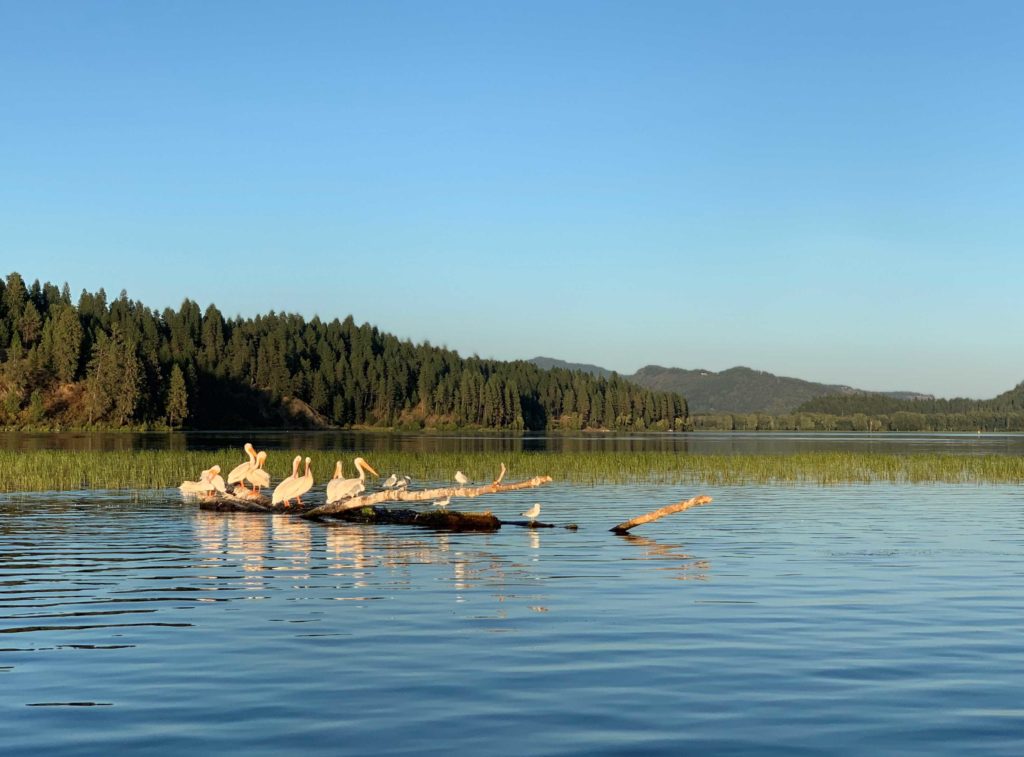The Spokane region is near a major flyway for many waterfowl species flying from their winter grounds to summer breeding areas. With the abundance of lakes and rivers, it is relatively easy to brush up on your ornithology skills and observe these long-flying migrants.
One of the best birds to start with is the American White Pelican. Due to their size they are hard to miss and easy to observe if you know where to look. They have unique behaviors that distinguish them from other large whitewater-loving birds like swans and herons, even from afar.
The White Pelican is one of the largest birds in North America with a wingspan of 8-9.5 feet, dwarfing bald eagles, whose wingspan is 6 feet. Their wingspan is similar to swans, but the heavy-bodied pelican have a characteristic huge yellow bill with an expandable throat sac. When flying, white pelicans expose their black wingtips. They fly in flocks with a distinctive “v” pattern and usually float in these flocks on remote lakes in our region.

Watching these birds forage is a great example of teamwork. These birds use their large bills and their fellow flock to forage for fish and invertebrates. In deeper water the flock swims in circles, helping corral fish toward individual birds. They do not dive for fish or crawdads like the brown pelican; instead, they dabble, up ending their rumps to reach deeper into the water.
American White Pelicans nest in remote brackish and inland islands from southern Wyoming to Alberta, Canada. According to Washington Fish and Wildlife, these pelican did not breed in the state from 1930-1955, but there is now a colony on the Columbia River’s Badger Island near Walla Walla.
They lay one to two eggs but frequently only one chick fledges. The parents will both rear the young for three to four weeks. Then the chick will join other young in the flock and fledge at 10 weeks, ready for a long flight south. In winter, to avoiding frozen lakes and rivers, these birds head for the coast of northern Central America, southern California, and Florida.
Locally, American White Pelicans can be found in the spring trolling many of the quieter lakes in our region. I have seen flocks while floating the chain lakes along the Coeur d’Alene River and in the southern end of the lake while biking the Trail of the Coeur d’Alenes. Small flocks will also frequent some of the larger kettle ponds on the Okanagan plateau.
Adam Gebauer is the Nature columnist for Out There. He is currently training his new dog to ski, bike, run, and maybe climb 5.11.













